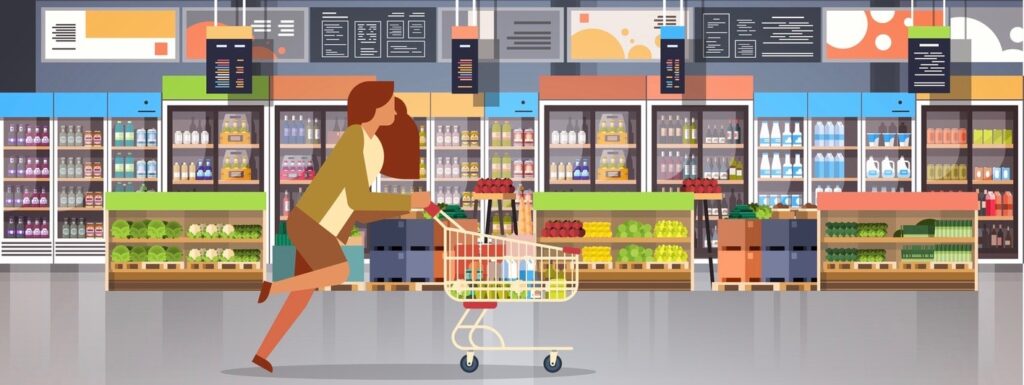Are you an existing e-commerce store owner looking to improve your fulfillment process. But having a hard time deciding what you should do? This post will help you with that decision.
Below is a detailed comparison of warehouse management software. Inventory management software and order fulfillment software. But before we get into the details I would like to give you some advice. That whether you are an e-commerce merchant or a seasoned merchant.
Section: 1. What is e-commerce fulfillment?
E-commerce fulfillment is the process of getting orders from customers and shipping them to them. It includes receiving, storing. Picking and packing items before they are shipped to their final destination.
E-commerce fulfillment is usually a complex process. That involves many different people (like pickers and packers). And systems (like Warehouse Management System).
Why is e-commerce fulfillment important?
E-commerce fulfillment is one of the most important parts of an e-commerce business. Because it’s responsible for getting merchandise to customers quickly and efficiently. Fulfilling orders on time is crucial to maintaining customer trust and loyalty. As well as ensuring your reputation in the eyes of search engines like Google.
The first step in e-commerce fulfillment is receiving and processing orders. This includes:
– Collecting and recording customer information.
– Processing payments.
– Checking inventory levels and availability (to make sure there’s enough stock to fulfill each order).
– Creating shipping labels or pick lists (so you know where each item should go).



Section: 2. What is the difference between e-commerce and retail?
Retail is the sale of goods in a physical store. E-commerce, on the other hand, is the sale of goods online. A lot of people think that e-commerce and retail are interchangeable terms for selling online. But they aren’t – there are some big differences between them:
– E-commerce is usually cheaper than retail. Because you don’t have to pay for any physical storefronts. You can sell items at lower prices.
– Shipping costs are lower with e-commerce. Since you don’t have to worry about moving products around in a store.Your customers can get their orders much faster.
– It’s easier to run an online business than a retail one. Because there’s less overhead and less work overall (no need for employees).


Section: 3. Types of fulfillment setup.
There are two main types of fulfillment setups: drop shipping and FBA.
– Drop shipping is when you outsource the fulfillment process to a third party. They handle everything from packing your products up. To shipping them directly to your customer (usually via USPS or UPS).
– You can also choose to use an FBA service that allows you to sell on Amazon’s platform. It handles all aspects of selling online for you. Including packaging and shipping items directly to customers through Amazon Prime.
Drop shipping pros and cons Drop shipping can be a great way to get your products. In front of customers without having to deal with inventory or fulfillment yourself. However, it does come with its own set of drawbacks. Which you should consider before choosing this option:
– Pros: – No inventory management required (no need for storage space).
– You don’t have to worry about shipping costs as they are passed on to the customer.
Section: 4. What to consider for your e-commerce fulfillment strategy.
The most important thing to consider. When setting up your fulfillment strategy is the location of your warehouse. To get started, you’ll need at least one physical location where you can store products and ship orders. You may also want to consider:
1) Where will you be shipping from?
(If you have a local fulfillment center, do customers expect fast shipping?)
2) How much inventory should you keep in stock?
(The more product you have on hand, the greater your risk exposure)
3) What is your return policy?
(Having a clear and concise return policy will help you avoid customer confusion and reduce returns)
4) Will you provide free shipping for orders over a certain amount?
(Free shipping can be an important factor in increasing sales)
Section: 5. How does e-commerce fulfillment work?
E-commerce fulfillment companies are responsible for fulfilling orders from your online store. They accept your orders, process and pack them, then ship them to customers.
The first step is to load your inventory into a warehouse. This is done by sending the appropriate information (SKUs) to your e-commerce fulfillment company.
They then scan each of these items into their system. So they know where everything is located in their warehouse. When an order comes in. The e-commerce fulfillment company will pick the appropriate items from your inventory. And pack them according to specifications.
For example, if you sell electronics, they may package them in bubble wrap and place them in a box.
The next step is to ship the items. This can be done by either sending them via truck or through an air carrier. Once they reach their destination, your e-commerce fulfillment company makes sure. That all shipments have arrived safely before issuing a confirmation email to both you and your customer.
Section: 6. Picking and packaging.
The first step in the process of e-commerce fulfillment is picking and packaging the items. You may be wondering what this means and how it can help you. Well, if you are running an online store. You know that there is a lot of work involved in getting your inventory ready for shipping. This can include things like checking inventory levels and making sure. That all products are properly labeled and priced.
The good news is that you don’t have to do this yourself. Instead, you can hire an e-commerce fulfillment company to take care of the inventory management for you. This will save you time and allow your business to grow even faster than before.
If you are looking for a fulfillment company, there are a few things that you need to consider. These include:
1) The size of the warehouse.
2) The ability to handle your inventory.
3) The shipping carrier options available.
4) The cost of the fulfillment services.
5) The customer service and support.

Section: 7. Return process.
The return process is another important aspect of e-commerce fulfillment. If your customers are unsatisfied with their purchase, they may want to return it to get a refund or exchange.
This can be tricky if you are shipping directly from your warehouse. Instead, consider hiring an e-commerce fulfillment company that offers returns management services so this doesn’t become an issue for you.
The return process can be handled in three ways:
1) Return to the seller.
2) Return to the manufacturer.
3) Return to a third party (e-commerce fulfillment companies).
Section: 8. E-commerce fulfillment challenges and best practices.
E-commerce fulfillment is not easy. The more you understand about it. The better prepared your business will be to handle the challenges that come along with it. Here are some of the most common challenges:
1) Shipping rates can fluctuate dramatically during peak seasons.
2) Your product inventory may need to be stored in multiple locations across several states or countries. Which can be expensive and time consuming for small businesses.
3) You have to find a way to track all of your packages. Which can become overwhelming if you’re shipping thousands of boxes each month.
4) You have to deal with the logistical nightmare of packing, shipping and tracking each individual package.
5) You need to make sure that your customers’ orders are shipped on time. Which can be difficult if you don’t have a dedicated fulfillment team working around the clock.
